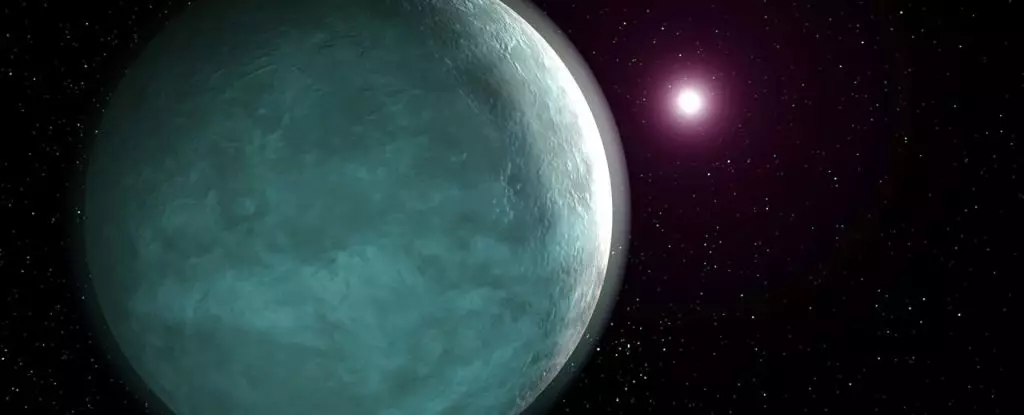Astronomers have stumbled upon a newly discovered exoplanet that has sparked intrigue and raised questions about current theories of planetary formation. Named TOI-332b, its physical properties and orbital distance from its star are perplexing experts. Notably, there is a scarcity of fast-orbiting, Neptune-sized exoplanets like TOI-332b in the Milky Way. This unique finding could potentially shed light on why such worlds are so rare in our universe.
To date, humanity has identified and confirmed over 5,500 exoplanets beyond our Solar System. Through this extensive research, scientists have discerned patterns in exoplanet properties such as radius or distance from their star. While some properties are relatively common, others are significantly scarcer. Understanding why some types of exoplanets are abundant while others are not could unlock the secrets of planetary system formation and evolution.
One area of particular scarcity is known as the Neptunian desert, where there is a dearth of Neptune-sized exoplanets in close proximity to their stars. The number of exoplanets residing within this size range and orbital distance is alarmingly low. In fact, researchers like astrophysicist Ares Osborn and their team from the University of Warwick have noted that only a handful of exoplanets fit this unique criteria.
Breaking the mold of the Neptunian desert, TOI-332b has been discovered orbiting an orange dwarf star located 727 light-years away. The exoplanet boasts a radius 3.2 times that of Earth, comparable to the size of Neptune. Additionally, it completes a full orbit around its star in just 18.72 hours, making it a fast-orbiting specimen of interest.
However, there’s more to TOI-332b than meets the eye. Through observations of its gravitational impact on its host star’s light, Osborn and their team have been able to calculate its mass. Astonishingly, TOI-332b weighs in at 57.2 times the mass of Earth, significantly surpassing Neptune which is only 17.15 times the mass of our home planet.
What’s most captivating about TOI-332b is its density, which stands at an astounding 9.6 grams per cubic centimeter. This makes it one of the densest Neptune-sized exoplanets ever observed. By comparison, Neptune has a density of 1.64 grams per cubic centimeter, while Earth’s density is 5.51 grams per cubic centimeter. On average, TOI-332b is denser than iron.
Current models suggest that TOI-332b possesses a massive iron core, accompanied by a rocky mantle and a thin atmosphere primarily composed of hydrogen and helium. However, the presence of such a sizeable core contradicts expectations. According to these models, a planet of this nature should possess a large, thick, extended Jupiter-like atmosphere. This gives rise to a perplexing question – where did TOI-332b’s atmosphere go?
While photoevaporation processes, caused by extreme radiation from the star, may contribute to atmospheric loss, they alone cannot account for the disappearance of an atmosphere of this magnitude. Other potential explanations include planetary migration, which could result in atmospheric stripping, as well as internal heating due to gravitational changes in the exoplanet’s orbit. Alternatively, a giant impact with another planet-sized object could have ejected the majority of TOI-332b’s atmosphere. It is also plausible that TOI-332b simply never accreted an atmosphere in the first place.
Clearly, more in-depth observation and analysis are needed to unravel the mysteries surrounding TOI-332b. As the researchers note, this enigmatic exoplanet challenges our current understanding of planet formation. The existence of a large core without a gaseous envelope remains an unanswered question. Future observations and investigations will be pivotal in unraveling the formation history and current characteristics of TOI-332b.
The discovery of TOI-332b introduces a compelling conundrum in the field of planetary formation. Its unique properties and deviation from expectations open new doors of inquiry. By delving deeper into the mysteries of TOI-332b, astronomers may gain invaluable insights into the intricate processes that shape our universe.


Leave a Reply